Economical source of energy, protein in aquafeeds
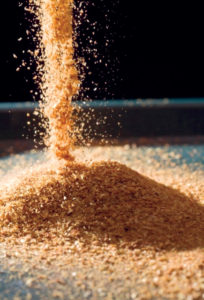
The extensive growth of the United States fuel ethanol industry in recent years has led to the production of over 36 million metric tons (MT) of distillers grains available for use in animal feeds. Distillers grains from the dry-grind fuel ethanol industry are nutritionally different from corn co-products produced by the wet milling industry, which include corn gluten meal, corn gluten feed and corn germ meal.
Historically, the majority of wet and dried distillers grains have been fed to cattle, but in recent years, 20 to 30 percent of total production is being fed to swine and poultry because of the grains’ high nutritional and economic value compared to corn, soybean meal and other competing ingredients. Distillers grain is typically an economically attractive feed ingredient because it often is priced at 75 to 80 percent the cost of corn, but contains three times more nutrients than corn.
Corn distillers dried grains with solubles (DDGS) are primarily an energy source, but also contain 27 percent protein and significant digestible phosphorus. Depending on the animal species, the grains have energy value greater than corn for ruminants, equal to corn for swine and about 85 percent of the value of corn for poultry. The lower energy value for monogastric species is primarily due to distillers grains’ moderate fiber content.
Currently, less than 1 percent of the total distillers grains produced are used in aquaculture feeds. Therefore, there are tremendous opportunities to use much more DDGS as an energy, protein and digestible phosphorus source to reduce diet costs and become less reliant on fishmeal and other more-expensive dietary energy ingredients in fish feeds.
Slow adoption of DDGS
Since distillers dried grains with solubles are relatively new and unfamiliar ingredients to many nutritionists, their use has been limited. There is a lack of recent research showing the benefits and limitations of using DDGS in a variety of aquaculture feeds.
Plant protein sources have traditionally been considered inferior to fishmeal in aquaculture feeds. However, some studies have shown that when two or more complementary plant protein sources (for example, DDGS and soybean meal) are included in a diet, the potential exists to replace all of the fishmeal in the diet, reduce diet cost and provide acceptable growth performance and flesh quality.
The moderately high fiber content in DDGS may be a concern, depending on inclusion rates and the fiber content of other ingredients in the diet for some fish species, especially carnivorous fish. The xanthophyll content of corn co-products can negatively impact fillet color and consumer acceptance for species such as catfish. However, the 20 to 30 mg/kg xanthophyll content is relatively low compared to concentrations in corn gluten meal of over 200 mg/kg and can be managed by establishing target total dietary xanthophyll concentrations to achieve an acceptable fillet color standard.
Variability in nutrient content among DDGS sources increases the risk of underfeeding nutrients. Nutrient requirements, especially for amino acids, for some species of fish are not well established. As a result, the current diet formulation methods used by many aquaculture nutritionists are not as conducive to optimizing the feeding value of DDGS in aquaculture feeds as for other food animal monogastric species such as swine and poultry.
Fat, fiber content
Mid-protein distillers grains provide high energy and high available phosphorus. The average coefficients of variation and ranges in content of selected nutrients in DDGS sources are shown in Table 1. Most of the energy in DDGS is derived from the relatively high crude fat content, while 2 to 9 percent comes from residual starch and lesser amounts of fiber and protein.
Shurson, Composition and variability, Table 1
| Nutrient | Average (Coefficient of Variation, %) | Range |
|---|---|---|
| Dry matter (%) | 89.3 | 87.30-92.40 |
| Crude protein (%) | 30.9 (4.7) | 28.70-32.90 |
| Crude fat (%) | 10.7 (16.4) | 8.80-12.40 |
| Crude fiber (%) | 7.2 (18.0) | 5.40-10.40 |
| Ash (%) | 6.0 (26.6) | 3.00-9.80 |
| Lysine (%) | 0.90 (11.4) | 0.61-1.06 |
| Phosphorus (%) | 0.75 (19.4) | 0.42-0.99 |
Table 1. Composition and variability of selected nutrients among DDGS sources (dry matter basis).
Shurson, Current recommended DDGS. Table 2
| Species | DDGS Inclusion | Comments |
|---|---|---|
| Catfish Tilapia | Up to 40% | Replacement for corn and soybean meal with lysine supplementation |
| Trout | Up to 15% | Without synthetic lysine and methionine supplementation to replace 50% of fishmeal |
| Trout | Up to 22.5% | With synthetic lysine and methionine supplementation to replace 75% of fishmeal |
| Freshwater prawns | Up to 40% | Can replace some or all of the fishmeal in the diet |
| Shrimp | Up to 10% | No studies are available, but based upon research results with freshwater prawns, a minimum of 10% DDGS in shrimp should be acceptable |
| Tilapia | Up to 35% | Without synthetic lysine and supplementation in high-protein diets (40% crude protein) |
| Tilapia | Up to 82% | With synthetic lysine and tryptophan supplementation in low-protein diets (28% crude protein) |
The crude fat content of DDGS is approximately 10.00 percent, and approximately 55.70, 7.80 and 0.14 percent of total fat is linoleic acid, linolenic acid and docosahexaenoic acid, respectively. As a result, DDGS has a high omega:omega 3 ratio. Due to the high price of crude corn oil in the United States, over half of the 207 ethanol plants in the U.S. now extract some of the oil before making DDGS. Therefore, the crude fat content of DDGS is becoming more variable: 5.00 to 12.00 percent.
Starch content in DDGS is low and can range from 2 to 9 percent, depending on the extent of starch fermentation to ethanol. It is not known if the starch present in DDGS is digestible or in the form of resistant starch.
The average values of crude fiber, acid detergent fiber, neutral detergent fiber and total dietary fiber (TDF) content in DDGS are 6.6, 11.1, 37.6 and 31.8 percent respectively, and 96.5 percent of the TDF is insoluble fiber. The fiber digestibility of DDGS has not been determined in fish, but studies conducted with other monogastric species indicated that fiber digestibility can be significant, but variable. It appears that fish with greater ability to utilize high-fiber diets perform well at high dietary DDGS inclusion rates compared with species with very little lower gut fermentation.
Amino acids
Despite the relatively high 27 percent crude protein content in DDGS, the lysine, methionine, threonine and tryptophan content values are relatively low relative to fish requirements. As a result, diets requiring high protein levels must be supplemented with crystalline amino acids when significant amounts of DDGS are added. The apparent digestibility of most amino acids in DDGS is over 90 percent in rainbow trout diets, except for threonine, but the amino acid digestibility of DDGS has not been determined for other fish species.
The 0.75 percent phosphorus content in DDGS is higher than in other plant-based ingredients, and much of the phytate phosphorus is released during corn fermentation in ethanol production, making distilled grains highly digestible for monogastric species. However, DDGS phosphorus digestibility and availability values have not been determined in fish.
Limited data are available regarding the xanthophyll content and bioavailability in DDGS, and their impacts on flesh color in fish, but the few values reported in the literature indicated that xanthophyll concentrations can be highly variable and range from 3.5 to 29.8 mg/kg.
One of the distinct advantages of distillers dried grains with solubles over other plant-based feed ingredients is that they do not contain the anti-nutritional factors found in soybean meal, rapeseed meal and cottonseed meal, and contains low levels of phytate compared with those in other plant-derived feed ingredients.
Potential health benefits
The addition of DDGS to aquafeeds appears to have beneficial effects in improving the immune status and resistance to some diseases in fish. Chlorn Lim and co-workers showed that feeding diets containing 40 percent DDGS to channel catfish provided resistance to Edwardsiella ictaluri, which was likely due to increased hemoglobin and hematocrit, increased total serum immunoglobulin and increased antibody titers 21 days post-challenge. Similarly, feeding 40 percent-DDGS diets to Nile tilapia improved resistance to Streptococcus iniae.
Researchers have presumed that the factors contributing to these positive responses were biologically active compounds derived from yeast, which comprises 4 to 7 percent of DDGS. Limited data have been published on the levels of these compounds in DDGS, but the beta-glucan content of DDGS is approximately 8 percent.
Extrusion diets
In general, high levels of fiber in DDGS are problematic, especially at high dietary concentrations. Researchers have determined that the most critical factors affecting the extrusion and pellet quality of DDGS diets are die geometry, temperature, moisture content and screw speed. The addition of various binding materials improves pellet durability and unit density.
Viable floating feeds containing 60 percent DDGS can be produced under specific conditions to float with unit density values from 0.24 to 0.61 g/cm3 and durability values ranging from 96 to 98 percent.
(Editor’s Note: This article was originally published in the July/August 2012 print edition of the Global Aquaculture Advocate.)
Author
-
Dr. Jerry Shurson
Professor
Department of Animal Science
335d AnSci/Vet Medical Building
1988 Fitch Avenue
University of Minnesota
St. Paul, Minnesota 55108 USA[117,100,101,46,110,109,117,64,49,48,48,115,114,117,104,115]
Tagged With
Related Posts
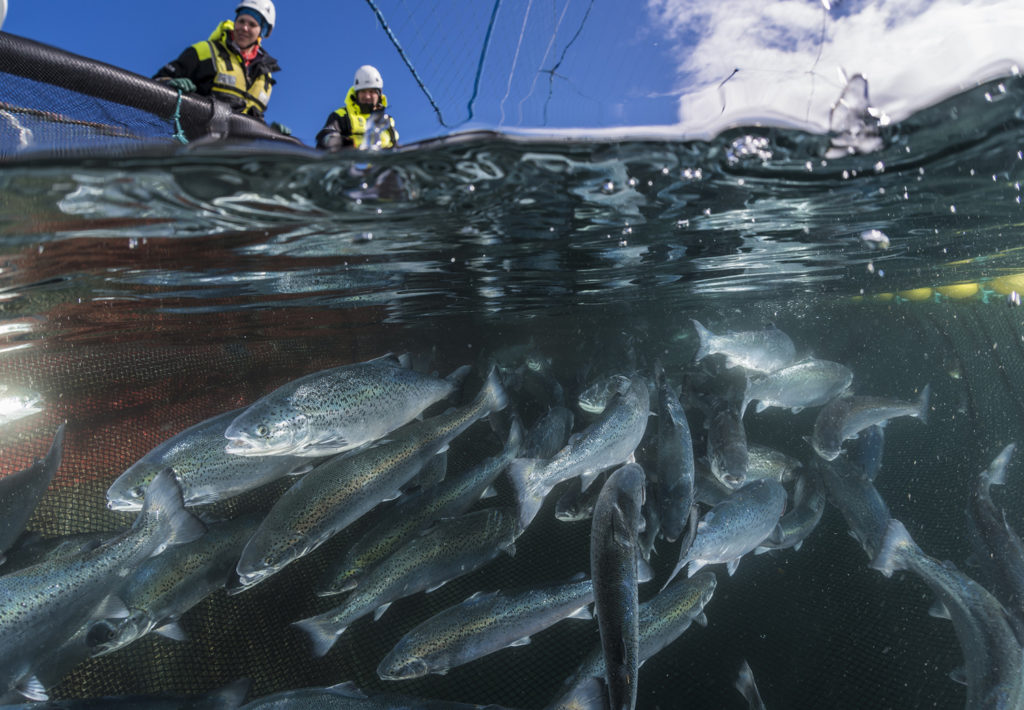
Aquafeeds
Can corn fuel aquaculture’s growth? Veramaris says yes
The benefits of omega-3 fatty acids to human health are well known. Fish need them too. To supplement current supplies from wild-caught fish, one innovative venture is turning to the corn fields of Nebraska – yes, Nebraska – for answers.
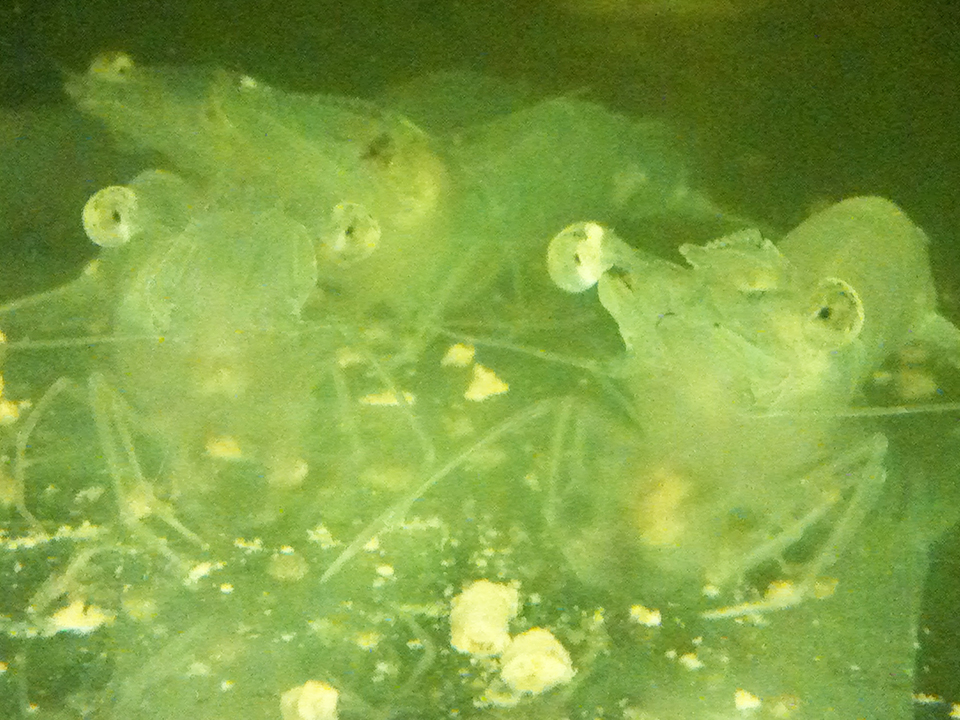
Aquafeeds
Soybean meal, distillers grains replace fishmeal in experimental shrimp diets
A study that used DDGS to partially replace soybean meal as the primary protein source in diets for juvenile white shrimp found the growth of shrimp significantly decreased when DDGS replaced soybean meal.
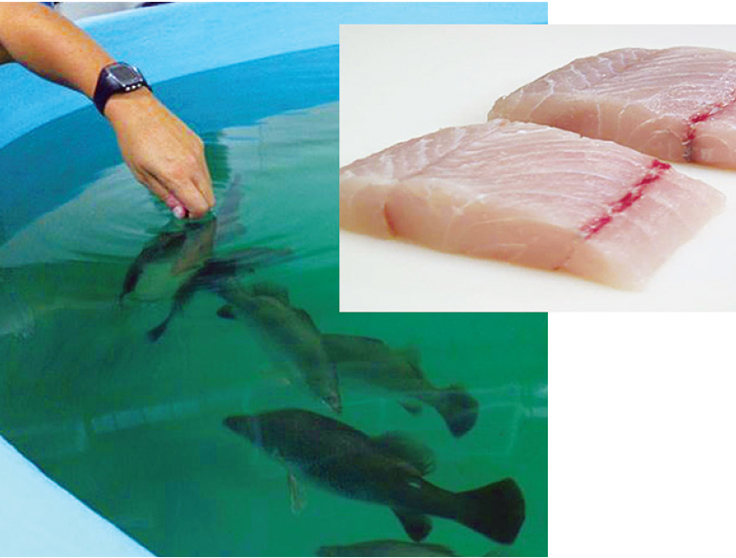
Intelligence
Adding flavor complexity to farmed barramundi
Organoleptic attributes such as flavor and aroma are among the most important factors that influence consumer acceptability and demand for fish products. Consumers have identified farmed fish as less complex and lacking “sealike” or “sea-fresh” flavors and aromas.
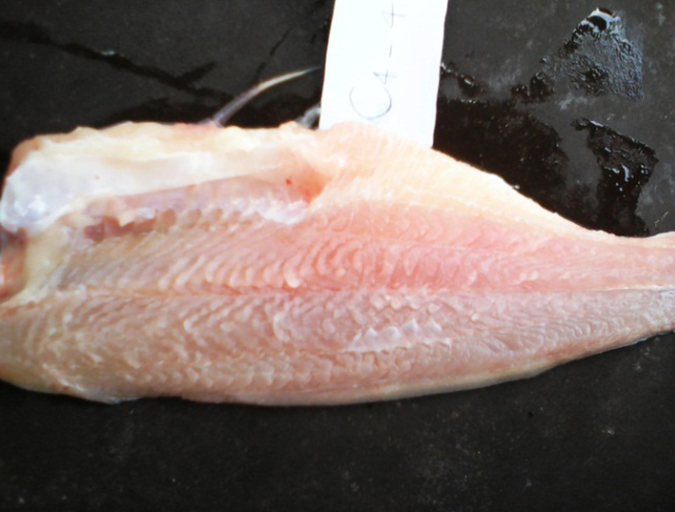
Aquafeeds
Pangasius diet trials show promise of DDGS
A feeding trial incorporated corn distillers dried grains with solubles (DDGS) as an energy and protein source in starter and grower diets for pangasius. Results showed excellent fish growth performance, and no negative effects on mortality, fillet yield or fillet color.


